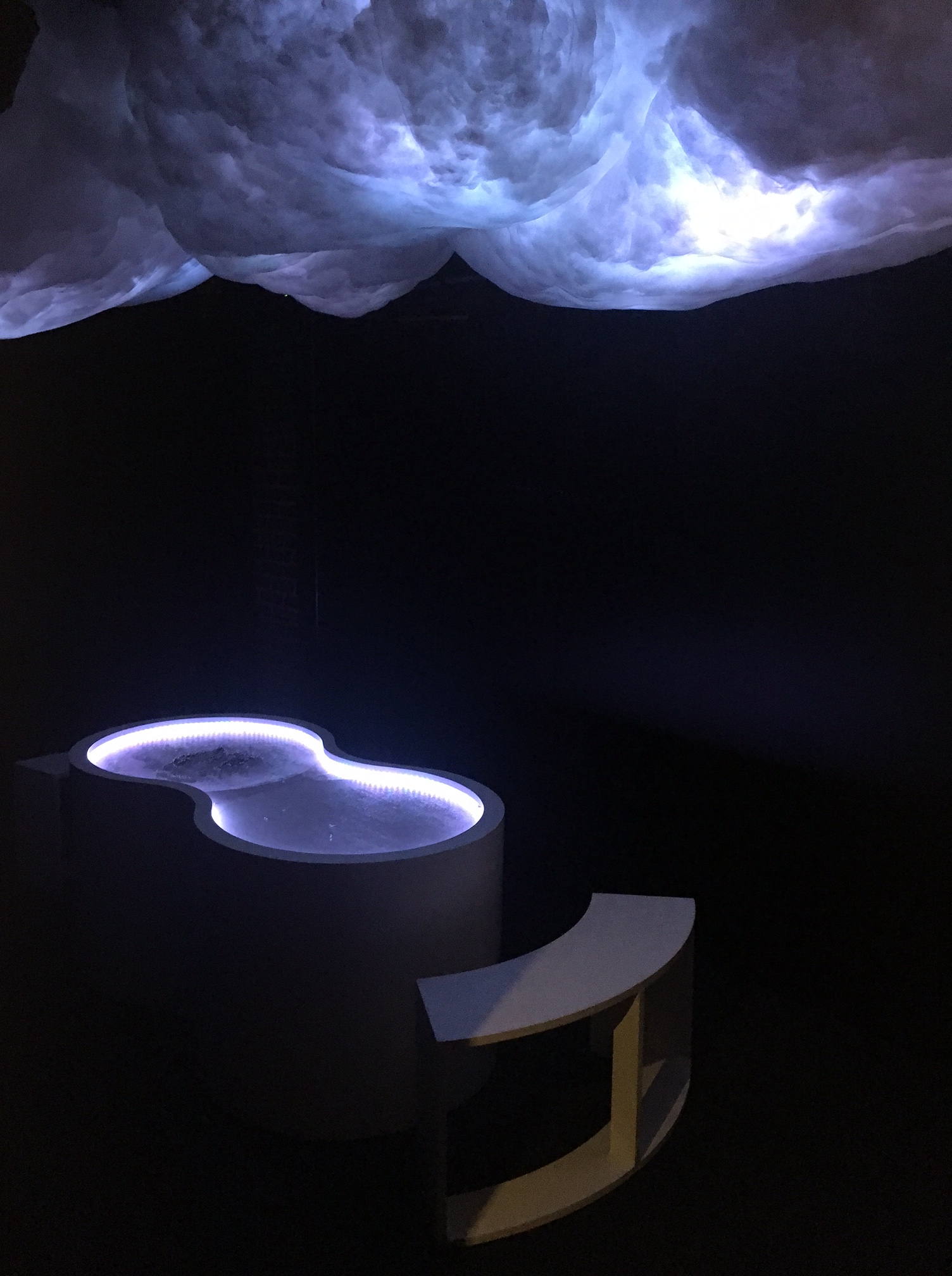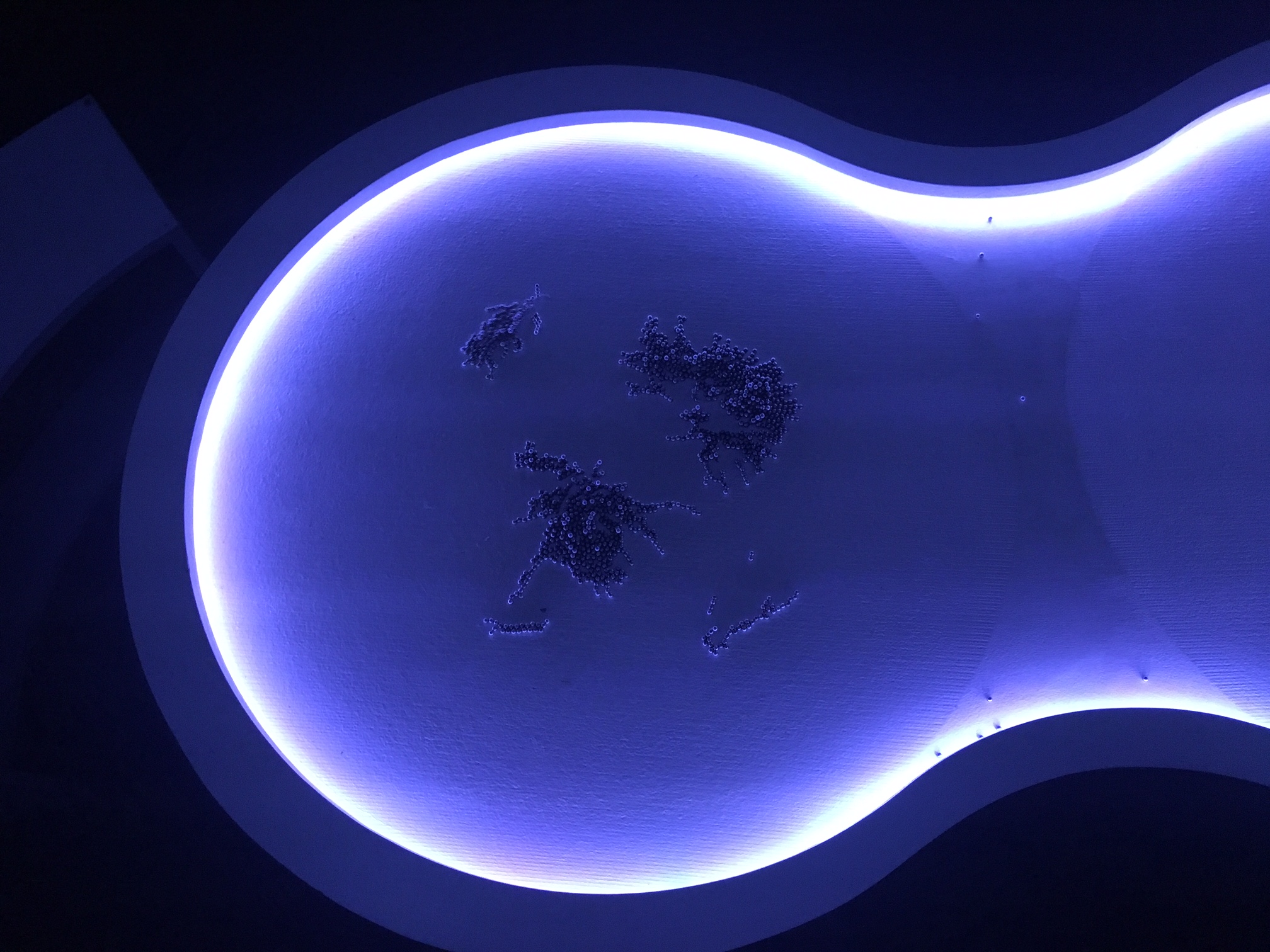Created by Shohei Katayama, Nimbus Drum is a kinetic sound artwork that encouraged viewers to interact with shifting, magnetic beads. The beads were always vibrating, and would clutter together at certain spots when dispersed. The clashing beads would generate amplified sounds that resemble thunder. The installation included a peanut-shaped platform containing the beads, seats at each end, and a cloud made of cotton hanging on the ceiling. The sound effects came from the cloud, which also radiated a fading blue light in the dim room. The aesthetic of the space helped immerse the viewers as if they were inside a storm.

The exhibit was located in the Attic room just beneath the gravity room. I was observing from the door way and noticed children, ranging from ages 3-7, and sometimes accompanying adults interacting with the exhibit. There were usually 1-2 kids and 1 adult within the room at a time. No facilitator was present. Children of different ages interacted with the exhibit differently. Sometimes the younger children would hoard the beads before dispersing it and seemed pretty excited to see the beads moving on their own. Older children were more interested in experimenting and manipulating the beads to observe the mechanisms of movement. How the beads moved appeared to catch the children’s attention more than the sound effects did, though the sound effects did implicitly contribute to the intended atmosphere of the room and made the beads more interesting to engage with. The exhibit focused on developing the childrens’ autonomy and initiative as it allowed the children to manipulate the beads in creative ways and yield different patterns of movement. Depending on the children’s age, the adults would be either picking up the beads scattered on the floor by the children or teaching them about the concept of magnetism.

Overall, the exhibit had a cool atmosphere completely different from the warm, playful atmosphere of the attic room.
Leave a Reply
You must be logged in to post a comment.